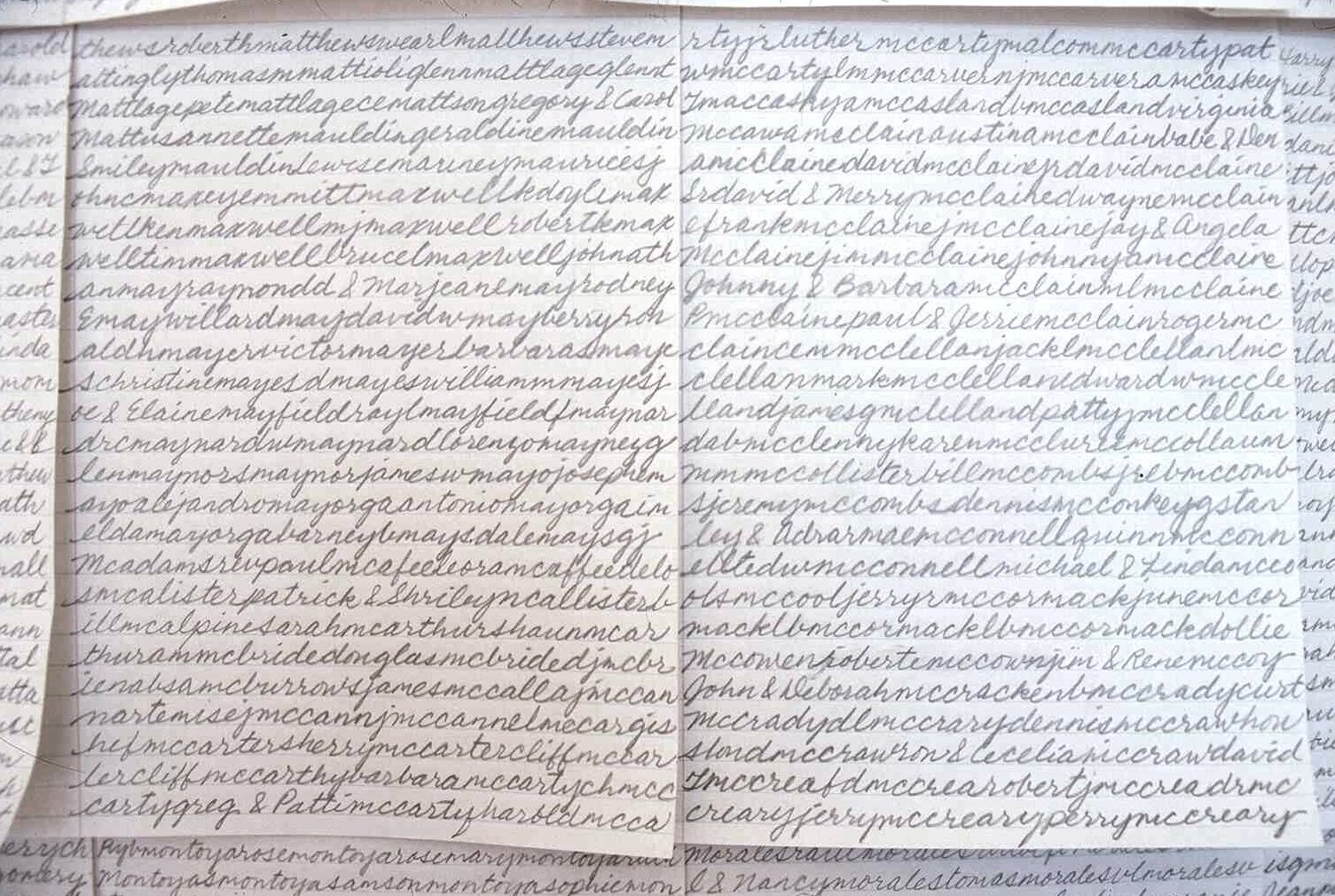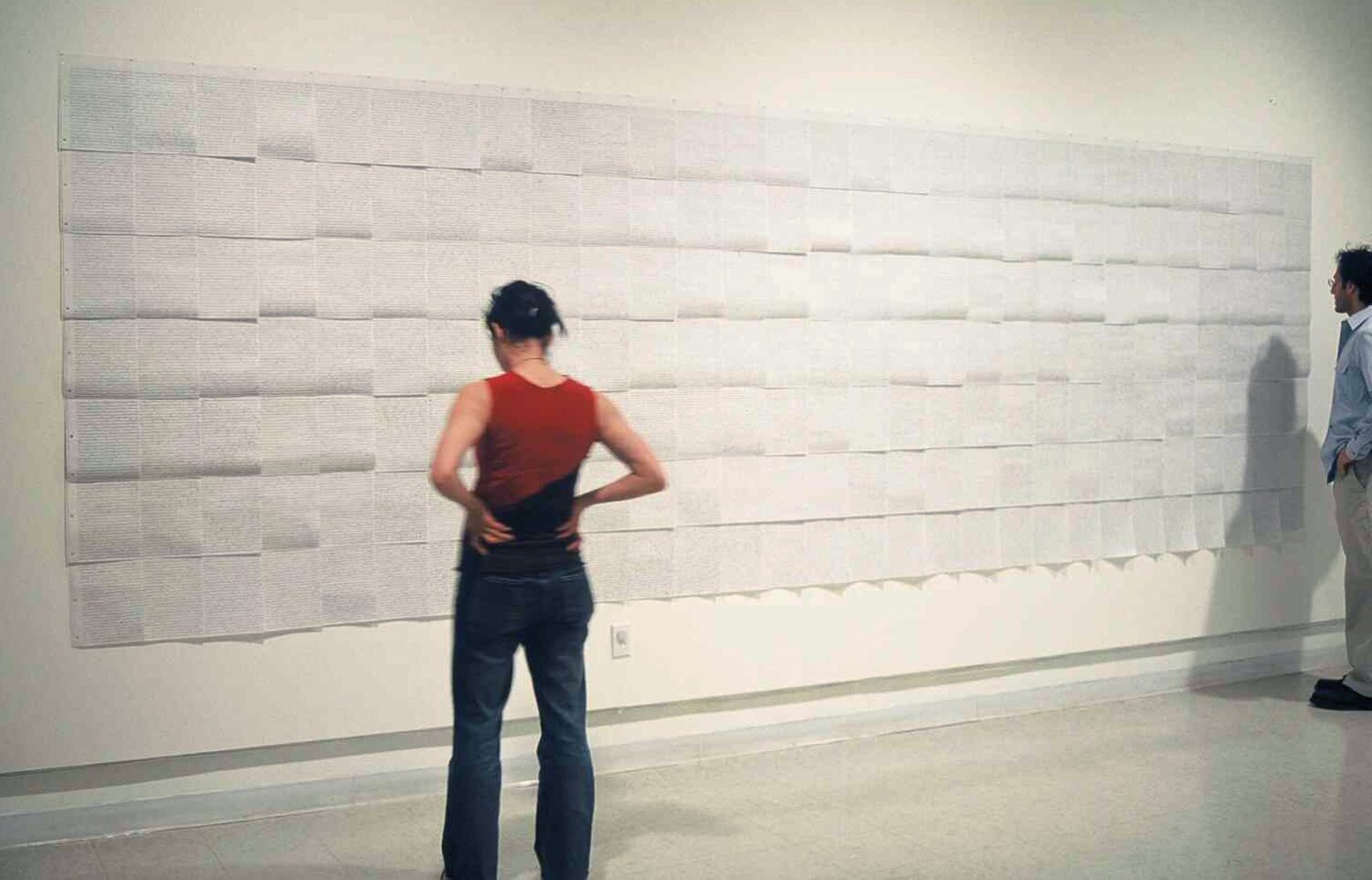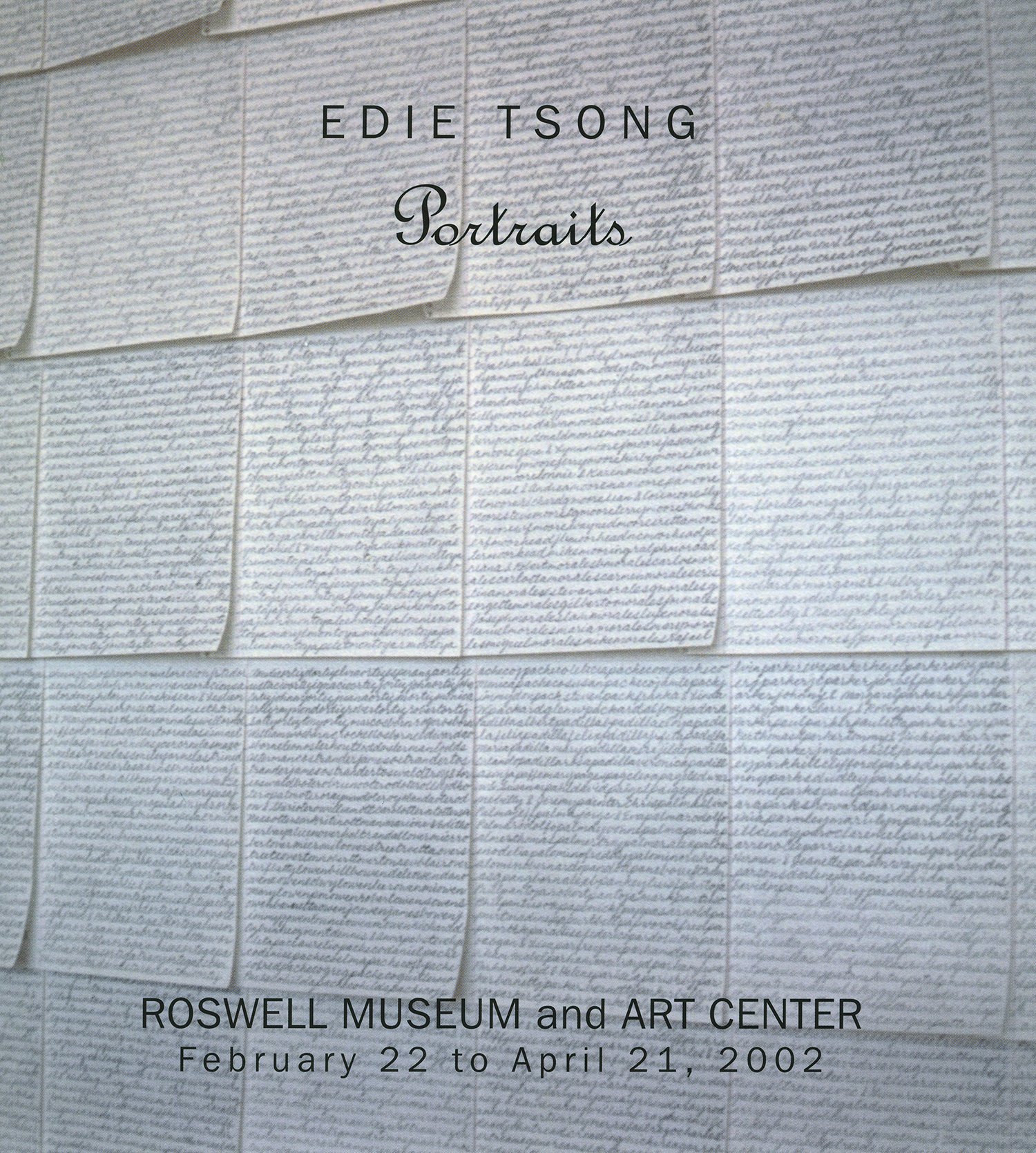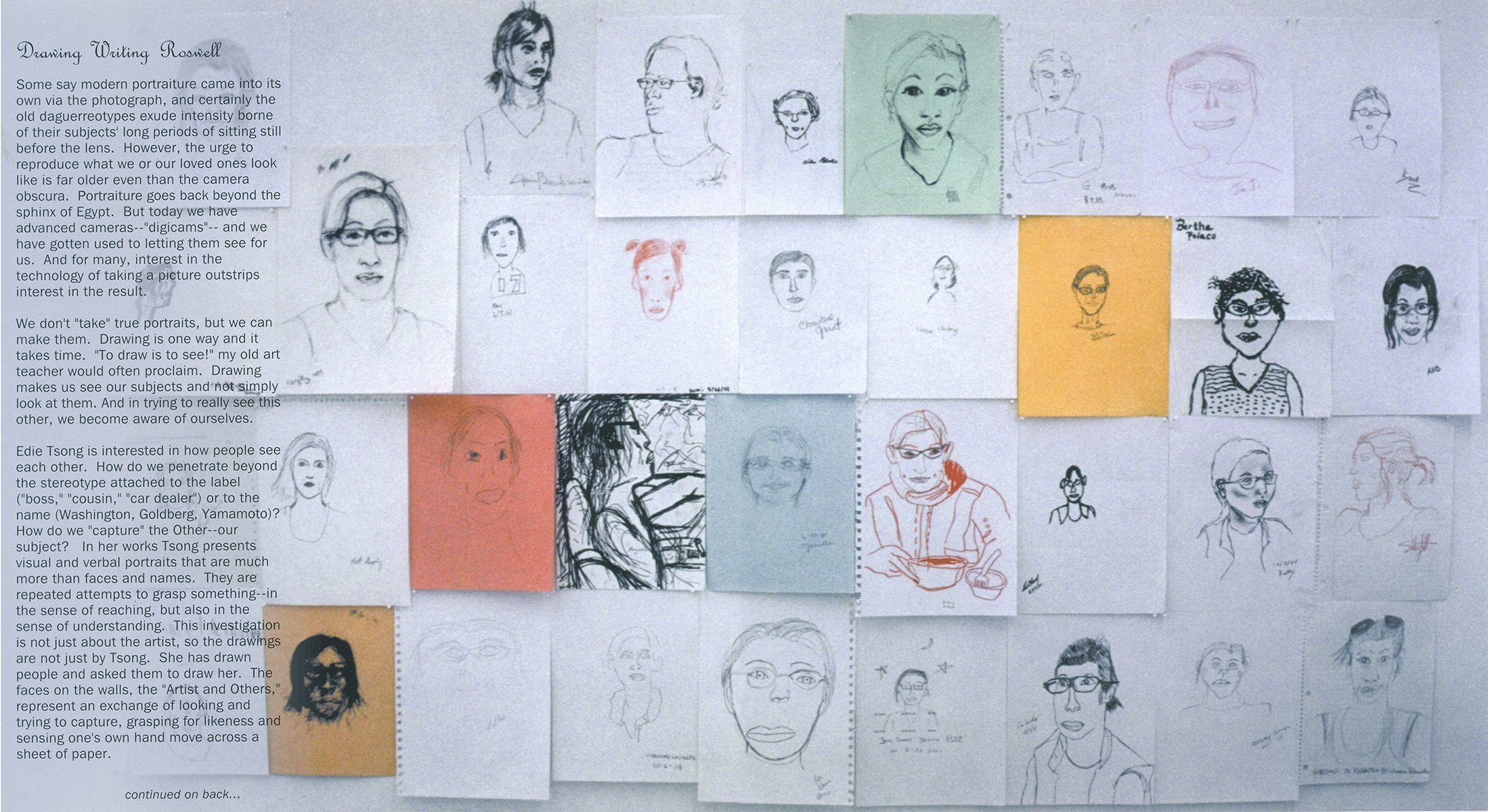AMoCA Collection | Matter of Fact, hand-sewn felt sections, polyester filling, 80” x 107” x 107”, 1998
RAIR | 2001-02
Edie tsong
Edie Tsong is an artist who explores how we literally and metaphorically connect with one another and with our environment. Her interactive and community-based conceptual portraits have been exhibited at the Mattress Factory, PICA's TBA Festival, Yerba Buena Center for the Arts, New Mexico Museum of Art and The PASEO in Taos. She is the founder of the Cut+Paste Society, a community of women writers and artists in the Santa Fe area, and the founding director of the Snow Poems Project. (From RAiR 50th Anniversary Exhibition Catalog, 2017)
Drawing Writing Roswell
Some say modern portraiture came into its own via the photograph, and certainly the old daguerreotypes exude intensity borne of their subjects' long periods of sitting still before the lens. However, the urge to reproduce what we or our loved ones look like is far older even than the camera obscura. Portraiture goes back beyond the sphinx of Egypt. But today we have advanced cameras--"digicams"--and we have gotten used to letting them see for us. And for many, interest in the technology of taking a picture outstrips interest in the result.
We don't "take" true portraits, but we can make them. Drawing is one way and it takes time. "To draw is to see!" my old art teacher would often proclaim. Drawing makes us see our subjects and not simply look at them. And in trying to really see this other, we become aware of ourselves.
Edie Tsong is interested in how people see each other. How do we penetrate beyond the stereotype attached to the label ("boss," "cousin," "car dealer") or to the name (Washington, Goldberg, Yamamoto)? How do we "capture" the Other--our subject? In her works Tsong presents visual and verbal portraits that are much more than faces and names. They are repeated attempts to grasp something--in the sense of reaching, but also in the sense of understanding. This investigation is not just about the artist, so the drawings are not just by Tsong. She has drawn people and asked them to draw her. The faces on the walls, the "Artist and Others," epresent an exchange of looking and trying to capture, grasping for likeness and sensing one's own hand move across a sheet of paper.
Alongside the faces are the names. In an effort related to her project to exchange hand-drawn portraits with Rowell inhabitants, Tsong wrote the white pages of the local phone book. She diligently copied the personal names in their alphabetical order with a #2 pencil, in standard cursive letters, the way we all do when we first learn to write. Carefully forming one name after another requires time and concentration; it is the opposite of the unconscious way in which we all dash off our own autographs. Tsong's grade-school script signifies a first encounter, an outsider's experience of a place--Roswell--via a landscape of names. Do these qualify as portraits too? Is a name a portrait of a person? Our names stand for us when we are absent. They take our place and encrypt our identity. But connecting names as they appear in the phone book, randomized by alphabetization, yields a jumbled result. Name after name, the listing sometimes groups family members but more often names of people unknown to each other are connected. People who do not share the same cultural heritage or racial antecedents nest together on the white pages, now handwritten at mural scale. Tsong's schoolish name-writing is a kind of portraiture that is blind and out of context.
What would it be like to see one another without memory? Gertrude Stein once said that if you try to draw what you remember or already know about someone, you do not see them in the present. If you see them in the present, that process involves your own experience, and the result is a portrait of yourself in terms of someone else. Tsong has tried to do this with Roswell. What would it be like to see each other in the present, without history, without associations, as if we are "all aliens"?
—Susan Elizabeth Ryan, Associate Professor of Art History at Louisiana State University, 2002





